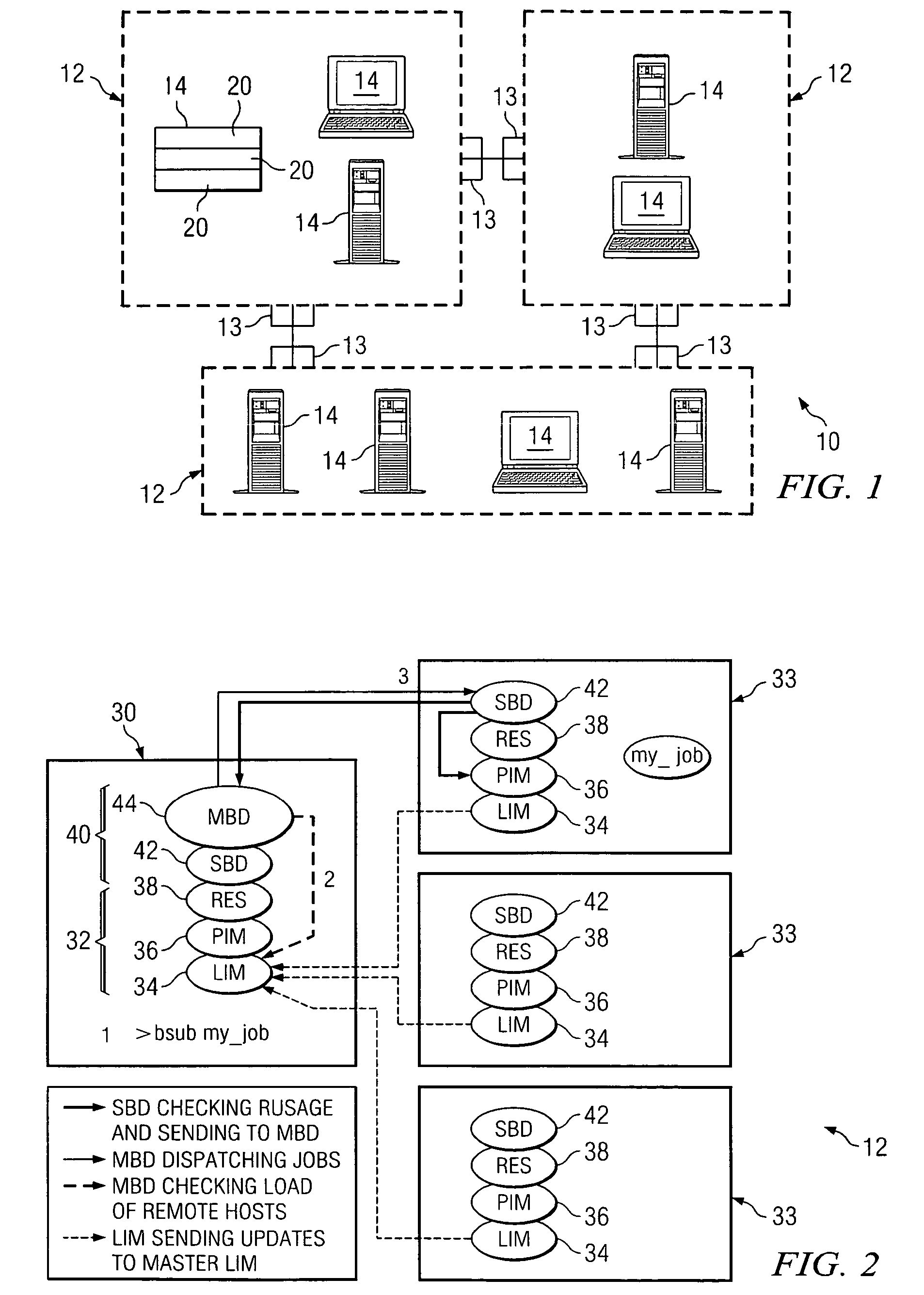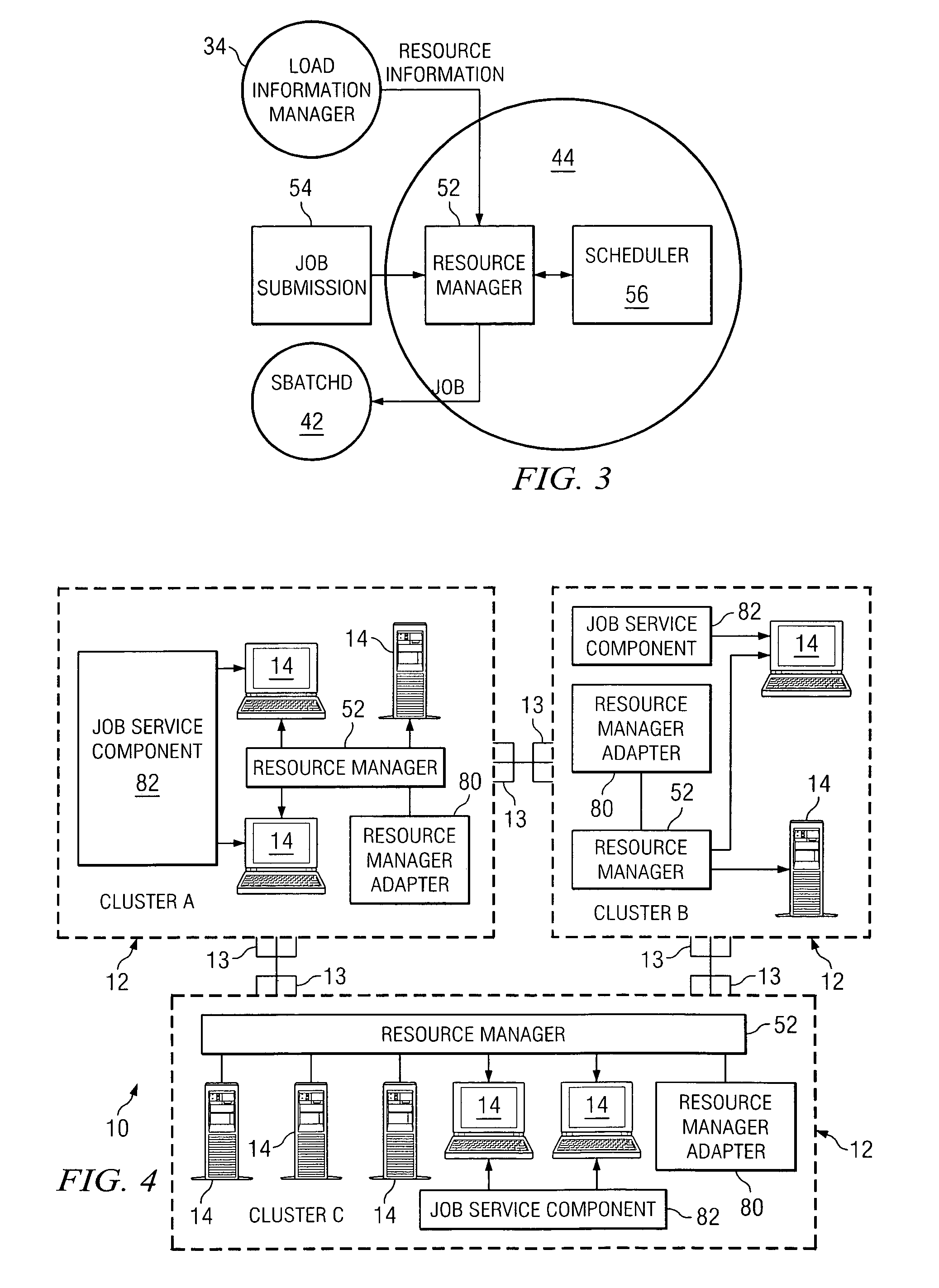Autonomic monitoring in a grid environment
a grid environment and automatic monitoring technology, applied in the field of computing grid environments, can solve the problems of increasing the demand for resources used in accomplishing such tasks, increasing the complexity of grid systems, and increasing the difficulty of managing such systems
- Summary
- Abstract
- Description
- Claims
- Application Information
AI Technical Summary
Benefits of technology
Problems solved by technology
Method used
Image
Examples
Embodiment Construction
[0021]The present disclosure relates to autonomic monitoring systems and related methods that may be deployed into distributed resource management, or grid, systems. FIGS. 1-4 illustrate an exemplary grid architecture and associated software modules that enable grid participation, whereas the remaining figures disclose the autonomic monitoring systems and related methods of the present disclosure.
[0022]FIG. 1 illustrates a computing grid 10 having a plurality of clusters 12, which are configured to communicate with one another to share resources across the grid. The clusters 12 generally include a plurality of commonly linked machines, or “hosts”14, which are enabled to provide resources such as CPU time, database storage, and computing capabilities. Each cluster 12 is typically protected by a firewall 13, which provides security for the networked hosts 14 within the cluster. A host 14 may be any machine capable of providing resources, such as a personal computer (PC), a server, or ...
PUM
 Login to View More
Login to View More Abstract
Description
Claims
Application Information
 Login to View More
Login to View More - R&D
- Intellectual Property
- Life Sciences
- Materials
- Tech Scout
- Unparalleled Data Quality
- Higher Quality Content
- 60% Fewer Hallucinations
Browse by: Latest US Patents, China's latest patents, Technical Efficacy Thesaurus, Application Domain, Technology Topic, Popular Technical Reports.
© 2025 PatSnap. All rights reserved.Legal|Privacy policy|Modern Slavery Act Transparency Statement|Sitemap|About US| Contact US: help@patsnap.com



